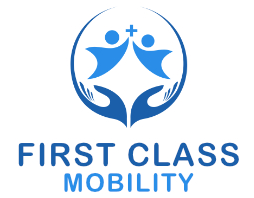

Air Travel Tips for Scooters and Wheelchairs

At Your Destination: Key Tips for a Smooth Arrival
Preparation and communication with your destination airport are essential. Many airports offer mobility assistance, and your airline can help coordinate support. Here's what to expect and how to prepare:
-
Retrieving Your Device: Your mobility device will typically be returned at the same location where it was checked at boarding. Inspect it for any damage or signs of mishandling. If you notice an issue, notify airline staff immediately to start a claim.
-
Reassembly and Check: Reattach any removed items, such as batteries, joysticks, or personal belongings, and verify your device is functioning properly. Once confirmed, proceed to baggage claim to collect your luggage.
Additional Tips for a Seamless Journey:
- Emergency Preparedness: Familiarize yourself with manual operation of your wheelchair in case of unexpected issues.
- Leverage Online Resources: Join forums or communities where travelers share insights on destinations and airlines.
- Pre-Trip Maintenance: Schedule a check-up for your mobility device to minimize the risk of issues.
- Accessible Accommodations: Confirm your destination meets your mobility needs, including accessible bathrooms, ramps, and suitable terrain for your device.
With these steps, you can confidently begin your trip, knowing you're prepared for every stage of your journey


Final Thoughts
Traveling with a power wheelchair, scooter or aide is entirely possible, and with a little time undertaking the right preparation, communication and attitude, traveling with a mobility vehicle should help you fully and enjoyably discover new place and live your life to the fullest!
We at First Class Mobility believe that everyone should be able to feel empowered in their everyday lives, but especially during their holidays and thus we hope that this article provides a few tips in helping you and your loved ones to do that to the fullest.
For questions, reach out to our consultants. Thank you for reading, and safe travels!
Note: This information is based on our experience and is intended as a general guide. Always verify current regulations and policies with airlines, regulators, and government guidelines before traveling.Discover our top recommendations for airline-compliant wheelchairs that make traveling easier and stress-free. Click here to explore the best options for your journey.
Looking for the best airline-approved wheelchairs? Read our article on the 7 Best Folding Mobility Scooters of 2024.
